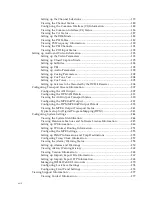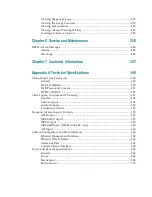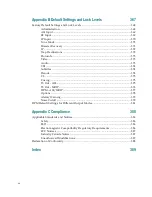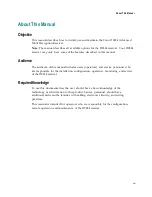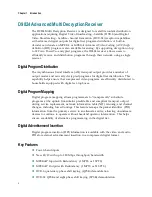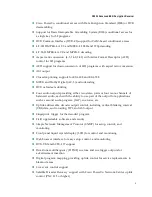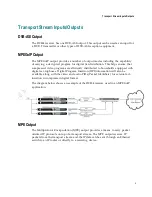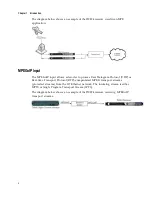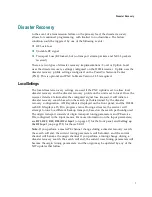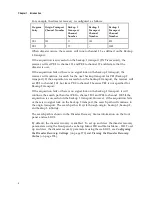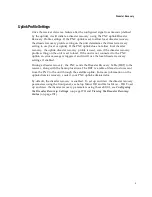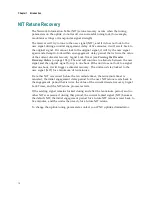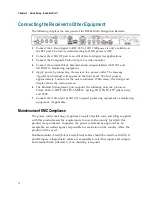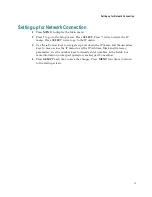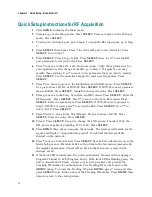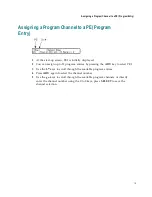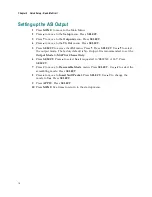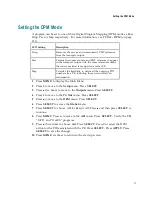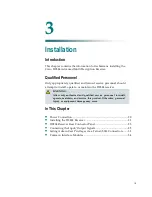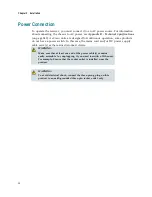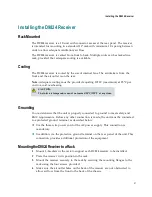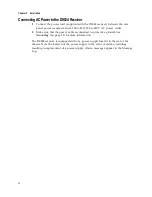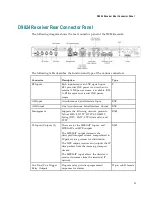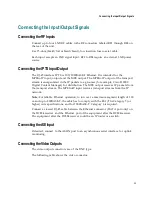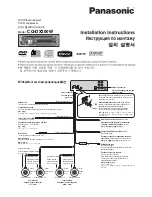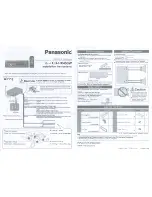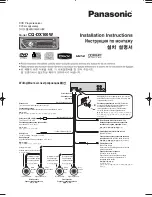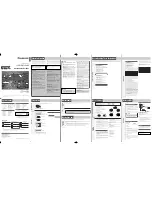
Chapter 1 Introduction
10
NIT Retune Recovery
The Network Information Table (NIT) retune recovery occurs when the tuning
parameters on the uplink do not result in a successful tuning lock (for example,
modulator settings or transponder signal strength).
The receiver will try to tune to the new signal (NIT), and if it does not lock to the
new signal during an initial engagement delay of five minutes, it will revert back to
the original signal. If it cannot lock to the original signal, it will try the new signal
again and attempt to lock within an engagement delay period that is twice the value
of the current disaster recovery Signal Lock Timer (see
Viewing the Disaster
Recovery Status
(on page 174)). The unit will continue to alternate between the new
signal and the original signal for up to one hour. If the unit does not lock to a signal
after one hour, it will trigger a disaster recovery. The unit must stay locked to the
new signal (NIT) for a minimum of ten minutes.
If another NIT is received before the ten minute timer, the ten minute timer is
canceled, the initial engagement delay period for the next NIT retune resets back to
the engagement period that is twice the value of the current disaster recovery Signal
Lock Timer, and the NIT retune process restarts.
If the existing signal remains locked during and after the ten minute period, and no
other NIT was received during that period, the current locked signal (NIT) becomes
the default NIT, the initial engagement period for a future NIT retune is reset back to
five minutes, and the unit is then ready for a future NIT retune.
To change the uplink tuning parameters, contact your PNC uplink administrator.
Summary of Contents for D9824
Page 22: ......
Page 26: ...Chapter 1 Introduction 4 On Screen Display support on baseband output NIT Retune Recovery ...
Page 40: ......
Page 164: ......
Page 306: ......
Page 368: ......
Page 370: ......
Page 388: ......
Page 410: ...Appendix C Compliance 388 Declarationof Conformity ...
Page 415: ......

